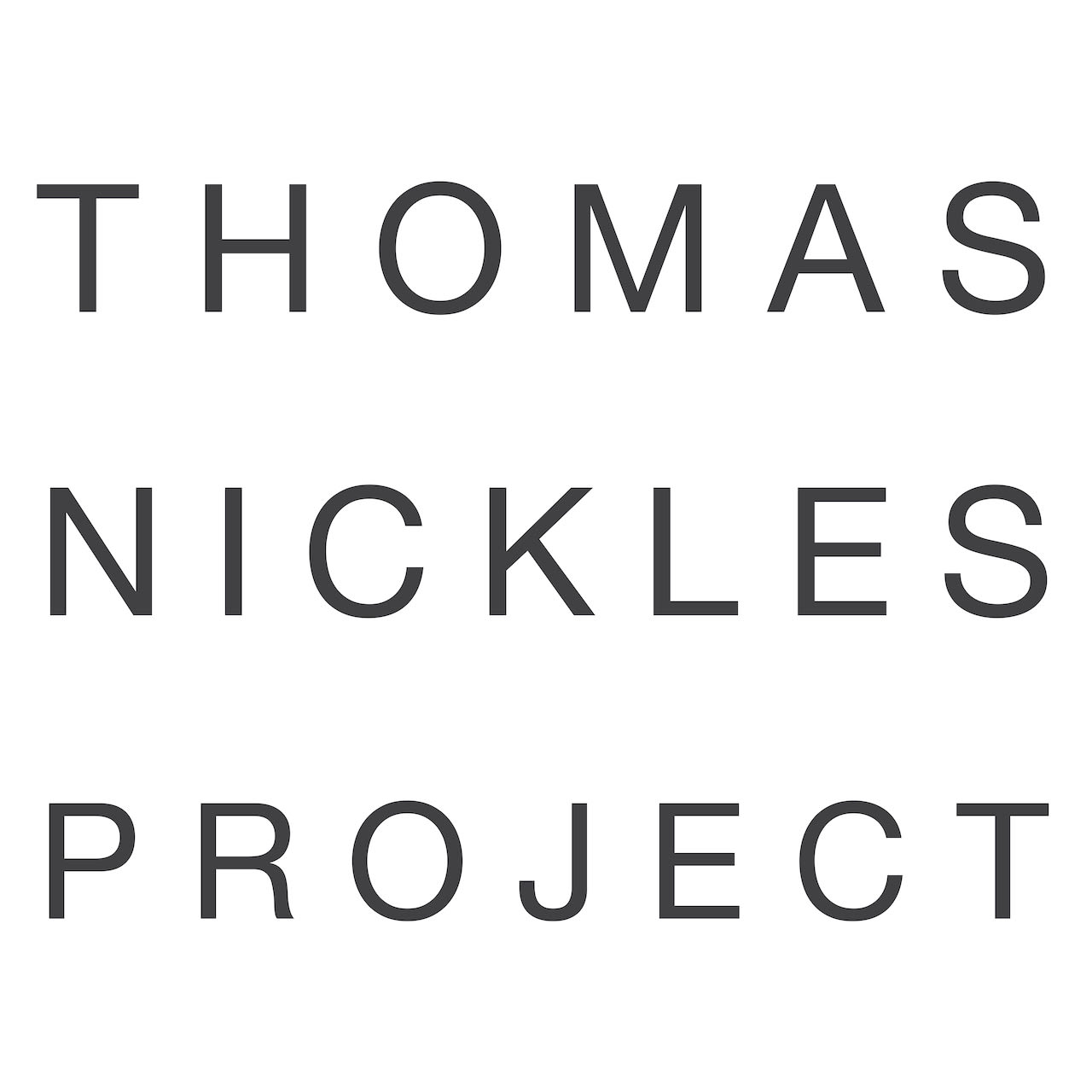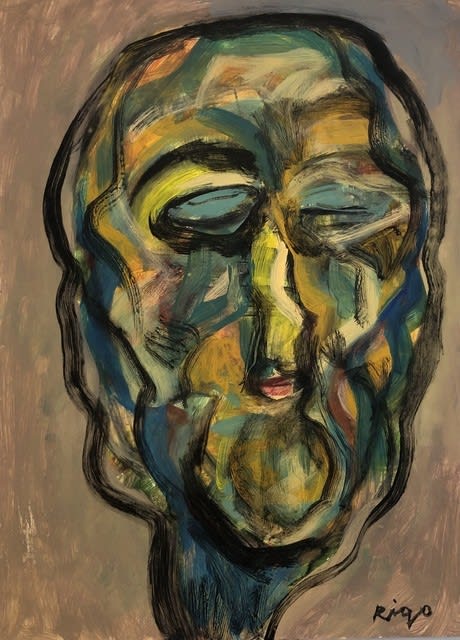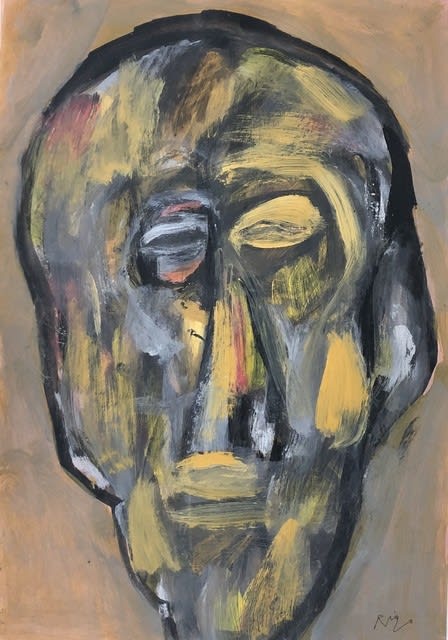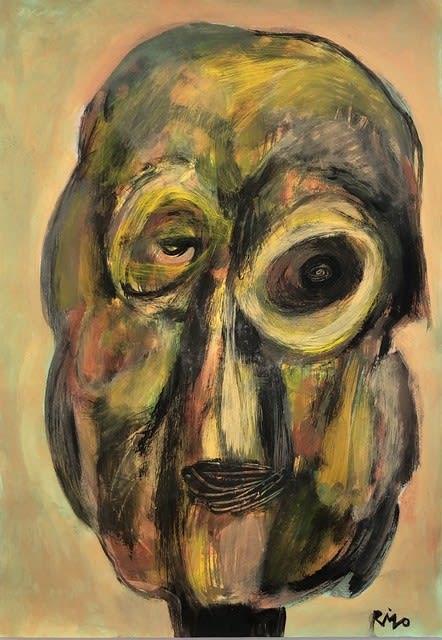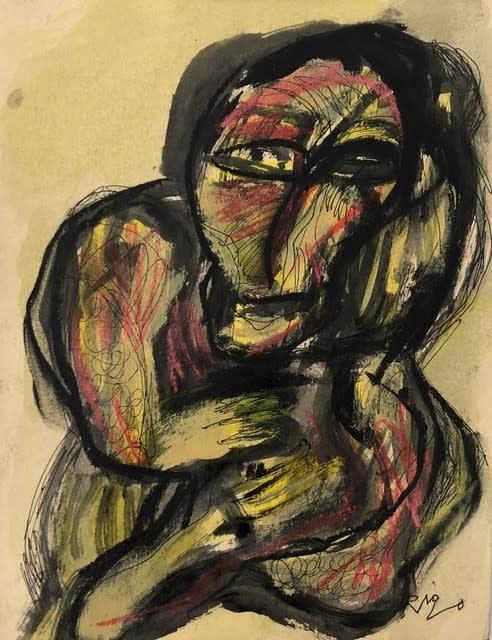Peripheries Vol. 2: Echoes Within: Rigo
Thomas Nickles Project is pleased to present Peripheries Vol. 2: Echoes Within, the first solo exhibition by Havana-born artist, Rigo (José Rigoberto Rodríguez Camacho) in New York. Echoes Within unveils twenty powerful portraits that draw us deep into the interior world of the human condition. Painted in his signature “Faux-Naïf” style, the works reject conventional beauty in favour of raw, unfiltered expressiveness. Distorted, tender, and sometimes grotesque, Rigo’s portraits pulse with a psychological intensity that feels both familiar and uncanny.
Rendered in bold color and intuitive brushwork, each face appears haunted by its own echo - of memory, emotion, and the multiplicity within. They remind us that the self is never singular: it is the neighbour, the other, the us.
Together, the paintings form a chorus of gazes that confront and unsettle, inviting us to reckon with the echoes that reside within us all.
Thomas Nickles Project is pleased to present Peripheries Vol. 2: Echoes Within, the first New York solo exhibition by Havana-based artist Rigo (José Rigoberto Rodríguez Camacho), on view from May 22 through June 22, 2025. Featuring a selection of Rigo’s emotionally charged portraits, the exhibition marks the second installment of the gallery’s Peripheries series—an ongoing curatorial program that investigates the limits of contemporary Cuban art and centers practices working outside traditional frameworks.
Though academically trained, Rigo operates at the margins, resisting categorization through both technique and intention. His paintings, shaped by a raw and intuitive process, move away from the rationality and realism of his earlier figurative work to instead give form to the inner complexities of the human condition. Echoes Within brings this tension to the surface through a chorus of painted faces, at once distorted yet tender, intimate yet unsettling. Each work is a psychological fragment, capturing the contradictions, fragility, and multiplicity that define human life.
“I want each face to establish a reflective dialogue with the public,” Rigo says, “so they can see themselves reflected through their own emotional subjectivity.” His creative process is rooted in spontaneity and emotional immediacy, with some works revealing sharper expressions of grief while others emerge from looser, more gestural abstraction. He begins paintings without predetermined ideas, letting stains, lines, and textures – applied with brushes, hands, and fingers – guide the work. His shift from figuration to abstraction in the early 2000s marked what he calls a “liberation of the imagination,” opening space for intuition, subconscious feeling, and spiritual depth to emerge through layered compositions. His faces become multidimensional portraits of inner life – many selves colliding on a single plane.
Several works in the exhibition are what Rigo calls “illuminated collagraphs.” To make them, he first constructs a printing plate by layering crumpled paper, fabric, wood, and other materials onto thick cardboard. This textured surface is then inked and run through a press, transferring its embossed impression onto a second sheet of cardboard. Rigo then reworks these resulting prints by hand, adding layers of acrylic paint and drawing to create high-relief portraits that further disrupt the boundaries between painting and printmaking.
Rigo’s materials are as diverse as the emotional registers his works evoke. On cardboard, he blends watercolor, India ink, pastel, oil, acrylic, and at times, directly pasting nontraditional materials onto the surface. These media combinations allow him to experiment with color, surface, and emotion in unexpected ways, evoking both the messiness and fleeting clarity of the human experience.
Although his inspirations include well-known artists like Van Gogh, Picasso, and Cuban painter Antonia Eiriz, Rigo’s most vital influence remains his lived experience. “Living in Cuba is already a challenge,” he reflects. For him, making art is both a spiritual practice and a form of survival. His portraits channel the insularity of the island into a broader worldview, one that reaches beyond borders to tap into something deeply human and universally felt.
Echoes Within proposes that art is not a fixed language, it’s a feeling. In a world often defined by exclusion and silence, Rigo’s portraits insist on the urgency of seeing – and of being seen. Continuing the Peripheries series’ mission to broaden how we understand Cuban art, this exhibition encourages us to recognize the emotions we carry, even when we can’t name them. In Rigo’s hands, painting becomes an echo chamber of the soul – each face a quiet revelation, a call to self-recognition.